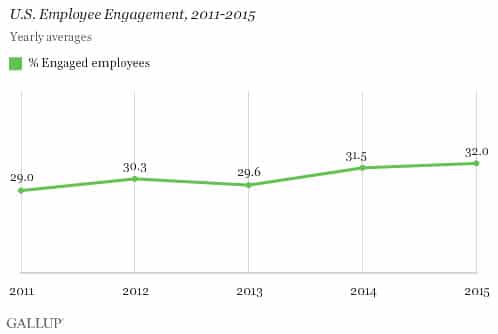Beware the Silent Killer of Your 2016 Business Plan

Mining for coal is risky business. From cave-ins to machinery or equipment failures and gas explosions to electrocution, dedicated miners face dozens of risks literally every day they clock in and head underground. The greatest danger of all was the build-up of carbon monoxide, a silent killer—because humans can’t really smell it—responsible for the deaths of thousands of workers until modern ventilation systems were introduced in the past 50 years.
The best protection against this silent killer involved bringing a caged canary into the mines. Canaries were the early detection system for dangerous gas. As long as they kept singing, all was well. But a dead canary meant it was time to evacuate—and fast.
Can You Smell It?
As a business leader, you’re already deep into the first quarter of 2016. The months and weeks you spent planning, designing and presenting business plans for the year are behind you—your strategies are set and your tactics have been carefully adopted. How can you possibly fail?
And yet, year after year, from organization to organization, without regard to industry, size, or competency, we’ve seen business plans fail to generate the returns their leaders so desperately intended.
The most common silent killer: your organization’s culture.
Why Culture Kills?
Defined simply as “the way your people think and act,” culture has been described by Roger Connors, best selling author of Change The Culture, Change The Game, as having the ability to “eat strategy for lunch.” The fact is, the most brilliant business plans only succeed when the organization’s culture can actually execute on the plan.
So, what’s the equivalent of the canary in the “culture” mine? How can you detect the presence of poisonous gases threatening your success in 2016?
One good early indicator is your measure of employee engagement. And if your organization is like most in the United States—and around the world—there’s undoubtedly work that can be done in this area.
Don’t feel bad; you’re not alone. The Gallup organization recently revealed that 2015 was another disappointing year for employee engagement in the U.S. Just last month, it reported that employee engagement remained stagnant at just 32%—remaining in roughly the same range since first being reported back in 2000. Even more troubling was the fact that 50.3% of employees when polled admitted to being “not engaged” in the work they are doing, and another 16.8% described themselves as being “actively disengaged.” “Actively disengaged?” What does that look like? That means that in the U.S. workforce, nearly one in five workers is going out of their way to undermine, derail, and even sabotage the very plan they are being paid to execute.
Seeing and Hearing the Hard Things
I spoke with a colleague one time who was so disengaged, he not only hoped that a specific business plan would fail miserably in order to embarrass the leadership team, but he even admitted actually taking personal action to ensure it failed. That kind of disengagement, from the very people leaders are counting on the most to propel a plan to success, is costing American businesses billions of dollars. In fact, Gallup estimates that “actively disengaged” employees cost the U.S. between $450-$550 billion in lost productivity every year. That’s a staggering amount.
Fully understanding what kind of engagement exists in their organizations is critical for leaders when they begin evaluating their culture. Creating a culture where open and honest feedback exists is the easiest and most affordable way to measure engagement. But even in organizations where that practice is common, we recommend that employee sentiment be measured by inexpensive analytical tools. Still, if engagement scores are through the roof, investing in meaningful efforts to improve and enhance your organization’s culture is paramount.
Making Sure the Lights Are On
The first step in building an enhanced culture, is linked to the creation of clear, distinct, and engaging Key Results. Over the years of partnering with thousands of organizations, our experts report a consistent finding in virtually every company they work with—the lack of clearly defined Key Results communicated effectively throughout the organization.
In the upcoming book, Fix It! Getting Accountability Right (Penguin Publishing, May 2016), authors Roger Connors, Tom Smith, Tracy Skousen, Marcus Nicolls, and Craig Hickman unveil and explore the results of Partners In Leadership’s groundbreaking “Workplace Accountability Study,” which includes data culled from over 40,000 people since 2012. In their study, the authors found to their dismay that most companies only talk about their Key Results—the three or four absolute must-hit goals—during annual planning periods.
Those Key Results might get mentioned. They might even get published. But rarely do even the best companies effectively communicate those Key Results down to every employee in a way that is meaningful, motivational and engaging. In fact, in the Workplace Accountability Study, only 15% of respondents said that company results were “sufficiently defined.” More than 66% of employees stated that priorities changed frequently, creating confusion about what really was most important to their organization. And a mere 7% said that members of their organization effectively aligned their daily work around what was most important to the company. Just 7%! That means that your brilliant business plan, the one you and your leadership team spent months creating, most likely lacks the clarity and cultural support to achieve its true implementation.
Modernizing Your Cultural Ventilation System
The second step is to systematically and intentionally create a Culture of Accountability where engagement thrives. Every company has its own culture, whether its leader intended it or not. Over the course of the past quarter-century we’ve learned that cultures can be successfully created and that a culture with accountability at its core is the most effective of them all. A Culture of Accountability leads to greater engagement, greater ownership and alignment, and also leads to greater innovation, execution and trust.
Most organizational leaders are well aware of the importance and power of culture. In fact, in 2014, “culture” was the number one business term in the United States. Louis V. Gerstner Jr., former Chairman and CEO of IBM said famously, “I came to see, in my time at IBM, that culture isn’t just one aspect of the game—it is the game. In the end, an organization is nothing more than the collective capacity of its people to create value.” If that’s so, why do so many leaders spend so little time working on the very thing that is likely undermining their own work?
First of all, they don’t know how. We spend billions of dollars educating and training our future business leaders. They spend years in undergraduate studies, get MBAs, then hone their business acumen and skillsets for years in the business world. They can read finance reports, understand the nuances and challenges of M&A, and are masters of strategic creation, implementation and execution. But we spend little to no real time learning about, understanding and creating workplace culture. In fact, the Workplace Accountability Study found that over 70% of leaders polled admitted that their change management efforts are not supported by a simple and effective model that people at all levels can use—clearly demonstrating the lack of focus leaders are putting on managing culture.
Secondly, they believe it takes too long to implement. One study suggests that it takes on average 2.6 years to fully complete true culture change. They get the need, but they need to deliver on this year’s business plan, not the one in 2018. What that thinking misses, however, is the incremental—virtually immediate!—impact that culture change provides organizations.
Facing the Hard Reality and Overcoming It
Several years ago, while heading up a talented but challenging sales organization, I came to realize that what was holding us back as a company wasn’t the product, marketing deficiencies or excessive competition. What was holding us back was true ownership of the organization’s Key Results as a result of a fractured company culture. The sales professionals were some of the best in the industry, but they had spiraled into a team that spent more time pointing fingers of blame at everyone else rather than embracing the situation and making it better. As a young leader I recognized the problem but didn’t have a clue how to effect the change. Working with a Partners In Leadership consultant we created a plan to inject greater accountability into the organization, clarifying Key Results and introducing simple, effective tools and language into the culture to make the shift easier to make.
I believed the effort would work, but what was surprising to me was how quickly the change took shape. Literally, the day after introducing the language and the tools, I started hearing people using the language and referencing the models. While it’s true that the overall culture shift took many months to complete, the improvements were noticeable immediately and led to record sales that year. Idling on whether or not to implement a change management process can cost your company millions—leaders need to always be working on culture—and sooner rather than later.
To bring it all back, do you remember that coal mine referenced at the beginning of this article? That mine is a metaphor for whatever organization you’re working for, working with, or leading. There is great potential in that organization, potential that your business plan was specifically and painstakingly designed to produce. But without the same level of attention and effort to bolster the culture of your organization, a culture that is always changing and shifting as people come and go and environments change, the true potential of your team, your organization, your company could be in just as much jeopardy as that proverbial canary.
Bring the best of the CEOWORLD magazine's global journalism to audiences in the United States and around the world. - Add CEOWORLD magazine to your Google News feed.
Follow CEOWORLD magazine headlines on: Google News, LinkedIn, Twitter, and Facebook.
Copyright 2025 The CEOWORLD magazine. All rights reserved. This material (and any extract from it) must not be copied, redistributed or placed on any website, without CEOWORLD magazine' prior written consent. For media queries, please contact: info@ceoworld.biz









